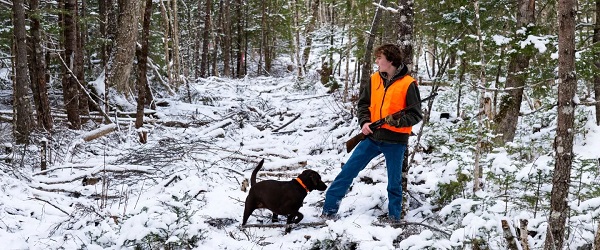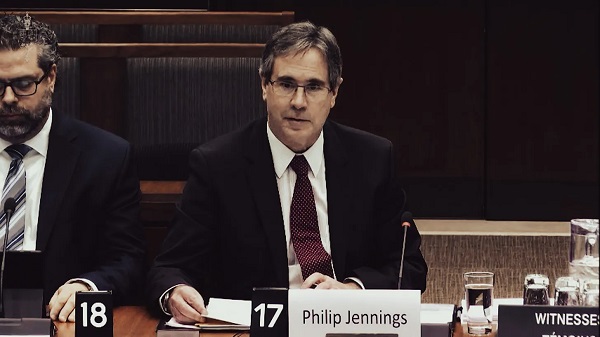Opinion
I believe in Red Deer. I don’t want to lose this once-in-a-lifetime opportunity. Do you?

I believe in Red Deer, I really do.
My wife and I decided to raise our family in Red Deer nearly 40 years ago.
We originally moved to Oriole Park and our children attended French Immersion at Fairview School at the start. Then French Immersion relocated to Mountview School and we followed and moved south of the river.
For several decades we have lived in Sunnybrook. We, even at our age, can walk easily to 3 high schools, the museum, Red Deer College, Downtown Recreation Centre , Michener Aquatic Centre, Downtown Arena (Servus Arena), Centrium complex, Collicutt Recreation Centre, Pidherney Curling Centre, Kinex Arena, Kinsmen Community Arenas, Red Deer Curling Centre, and the under-construction Gary W. Harris Centre.
When we lived in Oriole Park we could only walk to the Dawe Centre and Bower Ponds.
It was an easy decision, for our family.
Today, not much has changed.
Looking at future plans for Red Deer, it appears not much will change for the north side. Last year 311 more families moved out of the neighbourhoods north of the river than moved in. 280 more families moved into Blackfalds than left during the same period. Some will say it was low housing prices; negating the costs of commuting, the newly built Abbey centre or the prospect of a new high school, in the very near future.
North Red Deer has no current prospect of a high school even though the population is almost 3 times the size of Blackfalds. All 6 of the high schools, 4 current and 2 planned will be south of the river with 5 being along 30 Ave.
North Red Deer has no current prospect of a new indoor pool while the downtown recreation centre will see a 100 million dollar plus renovation. They do have a conditional prospect of a new ice rink added to the Dawe Centre. Conditional that the 40 year old structure is sound enough, if not it will be built at the Collicutt Centre.
The North will get a Recreation Centre, no pool, no ice rink, but a rec. centre. Apparently that is good enough.
The North gets the developments that the south side does not want. Industrial parks, public works yards, social housing to name but a few. The last school that was to be built north of the river, was at Johnstone Park and it was built south of the river. You wonder why 311 families or 777 residents moved out of the north.
But it is not just the North that is declining. 79 more families moved out of the south side of Red Deer than moved in, too. A decline 198 residents south of the river. A total of 975 residents more moved out of Red Deer than moved in.
Our crime rate has garnered national attention ranking sometimes second highest per capita nationally. There was a report talking about intensifying efforts on youth at risk.
One third of our youth lives north of the river, with no high schools, and only the Dawe Centre for indoor swimming and skating. Do they have time to commute from high school on the other side of the city to go home, have dinner and then commute again, across the city for extra-curricular and sports activities then commute a third time, across the city to home, do their homework before bed times? Can the parents afford the time and costs of so many cross-city commutes, possibly, carrying younger siblings to boot? Might be tough.
Living in Sunnybrook, it took very little time to commute. The kids could walk, roller blade, bike, skateboard, but then they very seldom had to cross the river. It was the right decision to move south.
It need not be anymore. We just have to get city council and the school boards to stop treating the north as some type of second-class society.
Tell them, when you vote on October 16, that there is another option. Build the next Aquatic Centre in the North-west corner to compliment the successful south-east Collicutt Centre. Red Deer North has Hazlett Lake, a hundred acre lake, with 2 miles of shoreline and an average depth of 10 feet, highly visible from Hwy 2 and Hwy 11a just waiting to be utilized, by people with vision, courage and strength.
On October 16 I will be looking for candidates with those qualities.
The next high school to be built will be a public high school, slotted in for land by 67Street and 30 Avenue. Let the board candidates know that, this is unacceptable and should be changed. It could be built in Johnstone Park or on the 3,000 acres now up for development north of Hwy 11a.
The next aquatic centre is slated for downtown, replacing the recreation centre. It was supposed to cost 87 million if built in 2013, then that would mean 95.7 million in 2014, 105m in 2015, 116m in 2016, 127m in 2017, 140 million dollars in 2018 not including the costs of demolition, improving transportation routes and services.
Why not invest that approximately 150 million dollars and build the Aquatic Centre on Hazlett Lake to complement each other, highly visible and easily accessed from Hwy 2. I heard tourism is a big industry, highly profitable and a huge draw for new residents. Am I insane to even consider an Aquatic Centre with a lake? People could take transit, bike, walk or drive to the beach, swim in the pool, and not pay 10 dollars for parking. The Collicutt Centre was controversial, but since becoming the most utilized facility, does anyone suggest it was a mistake. It helped kick-start development in the south-east.
What am I thinking? Look at the Riverlands. The city has spent over 230 million dollars moving the public works yard, aligning roads, upgrading services, and burying cables, etc. to create a 23 acre riverfront downtown neighbourhood. Yet it would be insane to consider building an aquatic centre on Hazlett lake? Do not forget, they are also talking about a 21 million dollar footbridge, 100 million dollar plus upgrade to the downtown recreation centre, and a downtown concert hall, and do not forget, added to that is the new skating rink, now being built.
With all this on the books, the city’s population still declined by 975 residents last year. Why not consider other options without shrugging it off?
Anyone?
I believe in Red Deer, I just do not want to lose a golden opportunity. Do you?
MAiD
101-year-old woman chooses assisted suicide — press treats her death as a social good

From LifeSiteNews
It must be said: The media’s relentless glamorization of suicide is repulsive and shameful.
It was once standard press practice to treat suicide as a tragedy. But since assisted suicide and euthanasia are now presented as the final front in the war for total autonomy, “human interest” stories now push the interests of the death lobby and treat suicide as a social good. The message this sends to the suicidal and desperate is clear.
The latest example of this is a December 2 story in Le Journal de Quebec on the assisted suicide of 101-year-old Paulette Fiset-Germain. She died by lethal injection in her room at the Manoir Cap-Santé on December 1. The opening line of the story almost glows with approval:
A centenarian who had lost none of her intellectual capacity is now shining in the sky after choosing medical assistance in dying on Monday.
Fiset-Germain had been living independently and alone only a few weeks ago but suffered two falls and a stroke. Last week, she told the staff and fellow residents that she wanted to die by euthanasia — or what in Canada is called “MAID.”
“I started to have trouble using the walker, I have one hand that I can’t use, the other one that I have trouble with, I can’t see one side anymore,” she said. “I’m at the end. You know when the glass starts to spill, it’s time to do something. In addition, you have trouble 24 hours a day, you don’t sleep. We’re going to close the loop.”
The Journal emphasized that she said this in a “very serene” tone of voice — and made it clear that Fiset-Germain’s family were supportive. “My children accepted my decision because they know me, they know that I am ready for it,” she said. “It started when I broke my hip and couldn’t do anything anymore. My decision doesn’t cause me any stress. I can’t wait. When the doctor agreed, I said, ‘You’re giving me a really nice gift.’”
To be clear: That “gift” is a lethal injection. She chose suicide by doctor — and the media celebrated it. That is nothing short of glamorizing suicide. In fact, the Journal made clear that Fiset-Germain was “grateful for the opportunity (of) medical assistance in dying,” but that she hopes it is expanded. In fact: “The last moments of Mme Fiset-Germain will also be the subject of a documentary.”
So, in addition to the puff pieces about her suicide, we’re going to get death porn propaganda that will be used to push for more suicides, likely (I suspect, although no details are yet available) produced in partnership with the vultures at Dying with Dignity.
“It’s too tight,” the elderly woman explained of Canada’s euthanasia regime, which is so notoriously loose it has been condemned by the United Nations. “We have to expand to relieve many people. There are others who are embarrassed, who are afraid of their children’s reaction. Mine told me, ‘It’s my choice, it’s my body, it’s my life.’” Funny — it seems like whenever someone uses that phrase, somebody is about to get killed.
The Quebec press is not known for its glowing coverage of religious beliefs, but for the suicidal Fiset-Germain, they made an exception. “Since I was little, I believe that when you die you become a star. When you see a shooting star, it’s someone who has left and is looking for a place,” she explained. “I received very good care here and I am very happy to end my days here and die in my bed.”
The article made sure to mention that she will “donate her body to science,” and quoted one of her reminisces of working as a nurse during the war, when she met a badly wounded soldier: “He was 20 years old and had lost both eyes, both arms and both legs. He asked me if he could hear his mother’s voice. I arranged for him to go to his house to hear it. I don’t know what happened to him next, but at that time, you couldn’t ask for medical assistance in dying.”
Her best friend offered her almost-too-enthusiastic support. “It’s a good decision,” her cousin and best friend Louisette Huard said. “After the life she’s had, the physical state she’s in.” I must say that if my best friend thought my suicide was a “good decision,” it would certainly heighten my suicidal ideation, but perhaps that’s just me.
Only the head of Manoir Cap-Santé and another friend were willing to express their grief. “It hurts us, but we respect her decision,” Guylaine Dufresne said. Her friend, Adelyre Goeguen, was blunter: “I didn’t like it right away. It was still a shock, and I don’t accept it at all.”
That, in case you’re wondering, is the correct response to the suicide of a close friend.
Artificial Intelligence
AI is accelerating the porn crisis as kids create, consume explicit deepfake images of classmates

From LifeSiteNews
“Ten years ago it was sexting and nudes causing havoc in classrooms,” writes Sally Weale in a chilling new report at the Guardian. “Today, advances in artificial intelligence (AI) have made it child’s play to generate deepfake nude images or videos, featuring what appear to be your friends, your classmates, even your teachers. This may involve removing clothes, getting an image to move suggestively or pasting someone’s head on to a pornographic image.”
I have been covering the rise of the next horrific manifestation of our collective porn crisis here at LifeSiteNews since 2019, when I warned that the rise of “deepfakes” would inevitably result in people making artificial pornography of their peers. Just a few years later, I reported on stories of middle-schoolers making deepfake pornography of kids they attended class with; last year, I reported on the rise of “nudify” apps that can digitally undress people in photographs, and the trauma, bullying, and inevitable sexual blackmail that has resulted.
The Guardian report reveals how swiftly this crisis is escalating. One teacher described an incident in which a teenage boy took out his phone, chose a social media image of a girl from a neighboring school, and used the “nudify” app to digitally remove her clothes. The teacher was shocked to see that the boy wasn’t even hiding his actions, because he didn’t see what he was doing as shocking, or even shameful. “It worries me that it’s so normalized,” she said. Other students reported the boy, his parents were contacted, and the police were called. The victimized girl was not even told.
The crisis is global. “In Spain last year, 15 boys in the south-western region of Extremadura were sentenced to a year’s probation after being convicted of using AI to produce fake naked images of their female schoolmates, which they shared on WhatsApp groups,” Weale writes. “About 20 girls were affected, most of them aged 14, while the youngest was 11.”
A similar situation unfolded in Australia, where 50 high school students had deepfake images distributed; in the United States, 30 female students in New Jersey discovered that “pornographic images of them had been shared among their male classmates on Snapchat.”
The mother of one student in Australia said that “her daughter was so horrified by the sexually explicit images that she vomited.” In the United Kingdom, the problem has exploded overnight:
A new poll of 4,300 secondary school teachers in England, carried out by Teacher Tapp on behalf of the Guardian, found that about one in 10 were aware of students at their school creating “deepfake, sexually explicit videos” in the last academic year. Three-quarters of these incidents involved children aged 14 or younger, while one in 10 incidents involved 11-year-olds, and 3% were younger still, illustrating just how easy the technology is to access and use. Among participating teachers, 7% said they were aware of a single incident, and 1% said it had happened twice, while a similar proportion said it had happened three times or more in the last academic year. Earlier this year, a Girlguiding survey found that one in four respondents aged 13 to 18 had seen a sexually explicit deepfake image of a celebrity, a friend, a teacher or themselves.
Predictably, teachers are also being targeted. Girls and women are left shattered by this victimization. Laura Bates, author of The New Age of Sexism: How the AI Revolution Is Reinventing Misogyny, writes: “It feels like someone has taken you and done something to you and there is nothing you can do about it. Watching a video of yourself being violated without your consent is an almost out-of-body experience.” Boys, meanwhile, are engaging in criminal behavior often without even knowing it. In the world they have grown up in, pornography is normal – and this is merely the next step.
The experts that Weale interviews are, as usual, at a loss of what can be done about this crisis. They emphasize education, while admitting that this is the equivalent of taking a water pistol to a raging forest fire. They are skeptical that guidelines or bans around technology at school will help. Understandably, educators are demoralized and even despairing. Pornography and sexting have already transformed schools. Deepfake pornography is now making an already ugly crisis far more personal, and there is no indication that the problem can be stopped without dramatic action.
The only genuine solution was put forward by Dame Rachel de Souza, the children’s commissioner for England. She has advocated that “nudification apps such as ClothOff” be simply banned. “Children have told me they are frightened by the very idea of this technology even being available, let alone used,” de Souza stated. De Souza is correct. The solution to the porn crisis is both tremendously difficult, but extraordinarily simple: we must simply make this content – and these apps – illegal.
The good news is that the first step in this direction has already been taken in the U.K. On November 3, the government tabled the Crime and Policing Bill in Parliament. It includes an amendment criminalizing pornography featuring strangulation or suffocation – usually referred to as “choking” – with legal requirements for tech platforms to block this content from U.K. users.
This is the first time a genre of pornography has been criminalized on the basis that even if it is consensual, it genuinely harms society. That is an encouraging precedent, because it applies to virtually all hardcore pornography – and certainly to the “nudification” apps that are set to make middle school a hyper-sexualized hell for women and girls.
The porn industry is destroying society. We must destroy it first.
-

 Daily Caller2 days ago
Daily Caller2 days agoTech Mogul Gives $6 Billion To 25 Million Kids To Boost Trump Investment Accounts
-

 Alberta2 days ago
Alberta2 days agoAlberta will defend law-abiding gun owners who defend themselves
-

 Business2 days ago
Business2 days agoCanada’s future prosperity runs through the northwest coast
-

 Alberta1 day ago
Alberta1 day agoThis new Canada–Alberta pipeline agreement will cost you more than you think
-

 National2 days ago
National2 days agoCanada Needs an Alternative to Carney’s One Man Show
-

 Business2 days ago
Business2 days agoOttawa’s gun ‘buyback’ program will cost billions—and for no good reason
-

 MAiD24 hours ago
MAiD24 hours agoFrom Exception to Routine. Why Canada’s State-Assisted Suicide Regime Demands a Human-Rights Review
-

 Business1 day ago
Business1 day agoNew Chevy ad celebrates marriage, raising children








